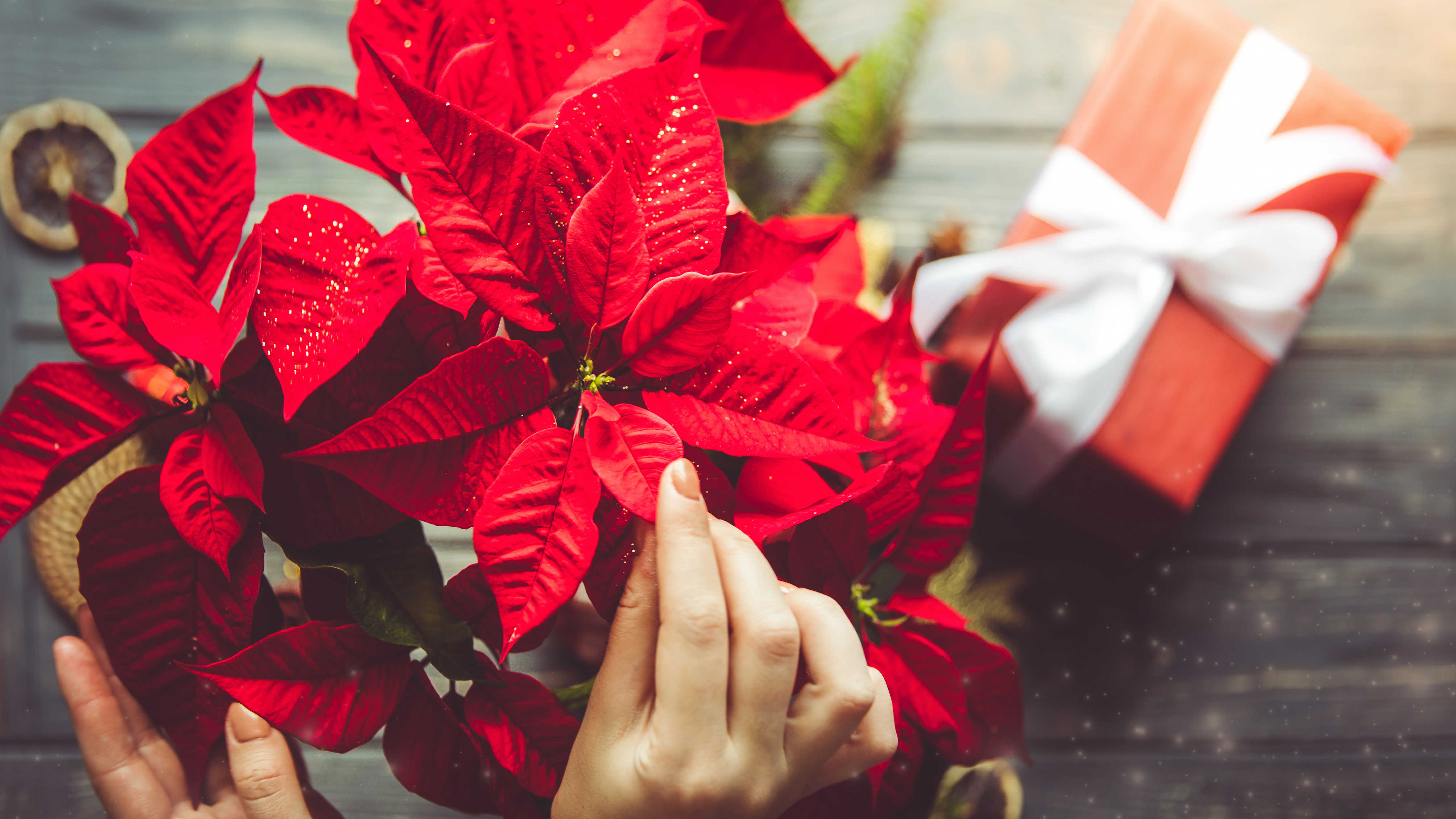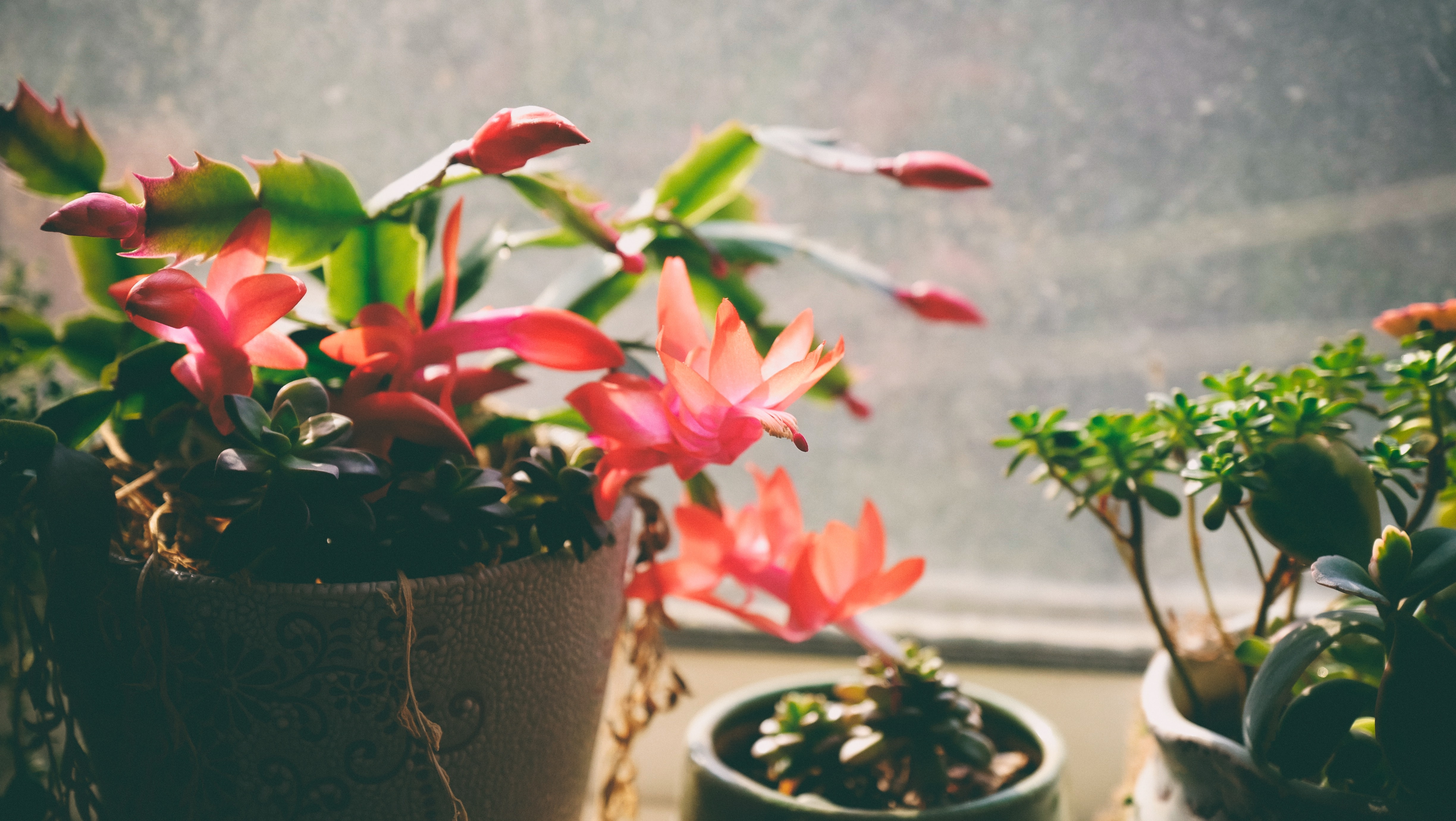Christmas plants: our top tips for trees, potted plants, and more
Whether you want a display of Christmas plants, a Christmas tree that doesn't drop, use our experts tips and ideas to enjoy a plantastic winter holiday

Christmas plants are an easy and fun way to enhance your festive decorating scheme, and it's not all about Christmas trees! From evergreen garlands to blossoming potted plants, our guide will give you plenty of tips and ideas on making your home festive in the all-natural way. Our experts, horticulturalist Matt James and floral designer Laura Lee tell us what to choose and how to care for them – plus how to make the biggest impact.
Want more inspiration? Check out our Christmas decoration ideas.
Plant a winter garden
'Some of this country’s most beautiful trees and shrubs, such as Jasminum nudiflorum (winter jasmine), Viburnum farreri and Abeliophyllum (white forsythia), wait until mid-winter to flower. Plant these outside, then cut thin branches for decoration inside,' says Matt James.
Find out how to plant a winter garden – and check out our list of the best plants for winter interest.

Buy the right holly for a classic seasonal favourite
'For a tree to bear fruit you need a male and a female plant (berries only appear on the female) or a self-pollinating cultivar such as ‘JC van Tol’. Confusingly, cultivar names aren’t a good indicator of a plant’s sex: the ‘Silver Queen’ holly plant is male, and the ‘Golden King’ is female. If you do have a holly tree that hasn’t berried, identify whether it is male or female and then find it a partner. Look closely: male plants have four yellow stamens protruding from the base of their flowers; females don’t.'
Prevent Christmas tree needle drop
'To prolong the life of your Christmas tree, position it in one of your cooler rooms,' advises Matt James. 'To keep a cut tree healthy, saw a fresh cut just above the end, then promptly stand it in water, which should be topped up daily. For pot-grown trees, keep the compost moist but not saturated. Choose a non-drop Nordmann fir tree rather than a traditional Norway spruce.'

Furniture, Neptune
Acclimatise your Christmas tree before taking it inside
'Don’t put your Christmas tree in a warm room straight away,' continues Matt. 'It needs to grow accustomed to its new environment to avoid premature needle drop. Stand it in the porch or garage for a few days before placing it inside. Once festivities are over, reacclimatise your tree in the same way, before moving it fully outside into a sunny, sheltered spot.'
Get small space home decor ideas, celeb inspiration, DIY tips and more, straight to your inbox!
Learn to care for orchids (it's easy)
Orchids aren't expensive to buy and they can last and last (and last) if you know how to care for them properly. Matt James says, 'Phalaenopsis and Cymbidium orchids are popular at Christmas, particularly as presents. Once the flowers have faded, cut out the spike. With regular feeding and misting, the plants will produce more flowers throughout the next year; they prefer a bright spot, out of direct sunlight. Water orchids regularly but never leave the roots in standing water for long periods.'
Pamper indoor plants (especially if they live in warm rooms)

Christmas decorations by Maisons du Monde
'Poinsettias, cyclamens and hyacinths grown for the Christmas period are usually forced into flower. Position them out of draughts, avoid deep shade and strong sunlight, and keep them damp – but not wet – particularly indoor azaleas. Regular feeding while in flower will also prevent wilting. Fragrant stephanotis and gardenias won’t mind warmer rooms, but mist them daily.
'Move house plants away from hot radiators to a bright, but cooler spot. Increase humidity levels to stop leaf tips turning brown; mist daily or stand houseplants on saucers lined with a layer of gravel or clay granules, half-filled with water.'
For house plant care tips, see our feature – and find out how to create an indoor garden for year round interest.
Use flowers and plants for a traditional festive scheme

The Crafty Christmas box from Bloom and Wild
'A decorated entrance makes everyone feel welcome,' says floral designer Laura Lee. 'Try adding a large ball of mistletoe hanging by velvet crimson ribbon near the front door. I use fresh red berries (ilex are the best) displayed in jugs and vases in a hallway for an eclectic look, with candles mingled between. Cinnamon sticks and mounds of satsumas piled into bowls is also a good idea. The fragrance and colours will add to the festive atmosphere and it’s cost-effective to create.'
Pick architectural plants for a contemporary Christmas
'Look out for neutral twigs, branches and vines that can be found easily in the winter season. They’re ideal as they don’t need to be kept in water so you can get creative!' continues Laura Lee. 'Trails of wild ivy entwined in bowers of natural larch, either in a tall, floor-standing vase or sisal baskets along with pinecones to give an instant Christmas look to modern living areas.
'Place white phalenopsis orchids planted in square glass cubes on a console or coffee table. They’re easy to create. Line the cube with fresh moss then place the orchid still in its original plastic pot into the cube. Cut larch twigs (or red dogwood) around 2ft tall and push them gently into the soil. Tie the stem of the orchid to the twig with natural string – this not only gives an unfussy, decorated look but it will support the flower stem. Finish by topping the cube with hazelnuts.'

Christmas decorations by Maisons du Monde
Choose inky shades for a decadent scheme
'An elegant Christmas display is easily achievable by keeping flowers, foliage and flora dark and mysterious. Birch twigs sprayed in deep plum colours and sprinkled with glitter will sparkle in candlelight.
'Place vases on windowsills with viburnum berries in them. They’re abundant in winter, just spray the berries with a touch of varnish for extra shine. One the table, use dark purple velvet ribbon, dark ivy or a mixture of both to tie napkins with a sprig of rosemary,' concludes Laura Lee.
Poinsettia care tips

Poinsettia care isn't very difficult, but there are few things to know about poinsettias that affect how they should be looked after in your home. This Christmas favourite actually originates from the dry forests of Central America, which have a very different climate to the winters in the Northern Hemisphere.
This, in a nutshell, is why many poinsettias don't make it through the Christmas festivities, let alone through the winter. However, there are a few things you can do to make a poinsettia more comfortable, and, with a bit of luck, even enjoy a second flowering next year.
1. Buy from a garden centre not the supermarket.
The reason why many poinsettias die almost as soon as they are gifted for Christmas is because they were kept in inappropriate conditions where they were sold. Supermarkets often display poinsettias right next to the entrance, which means these delicate tropical plants get blasted with cold draughts all day; by the time they've been bought, they've already begun dying.
This is why buying yours from a plant nursery or garden centre will pay off: it will have been kept properly by plant specialists.
2. Give them the correct amount of light
Poinsettias like a lot of light – but only during the day. These plants are used to bright, sunny days and pitch-black nights, so, for best results, place it on a bright windowsill during the day, and then put it away into a dark cupboard for the night (at least 12 hours is recommended). Too much electric lighting and insufficient darkness at night is confusing for this plant.
3. Keep poinsettias at a constant temperature
This is true of most tropical plants, and poinsettias are no exception: they like a constant, warm-but-not hot temperature, with no sudden fluctuations. That rules out placing them next to windows that are often opened, as well as next to sources of heat. Even having the leaves of the plant touch an overly cold window pane can make them ill. The ideal temperature for them is around 18 to 20ºC, so a bright spot in a living room or bedroom is best.
4. Don't overwater
It's important to let your poinsettia dry out completely between waterings; at the same time, if the root of the plant dries out, it will die. What this means in practice is watering a little every couple of days. Make sure the plant does not stand in water. You can also try the root-watering method: drench the root of the plant in water, then replace in its pot when the water's drained completely.
Alternatives to poinsettias: other potted plants that flower for Christmas

It's not all about poinsettias. If you've had them every year and want to try something different, try Christmas cactus – it has similar care requirements, so if you've looked after a poinsettias before, you'll do fine with it. Find more Christmas cactus care tips in our guide.

Kalanchoe is another great alternative – it's a blooming succulent that will delight with clusters of small flowers throughout the winter. It's very easy to care for – just make sure it gets enough light.
Find more information about decorating with winter flowers in our guide.
Anna is a professional writer with many years of experience. She has a passion for contemporary home decor and gardening. She covers a range of topics, from practical advice to interior and garden design.